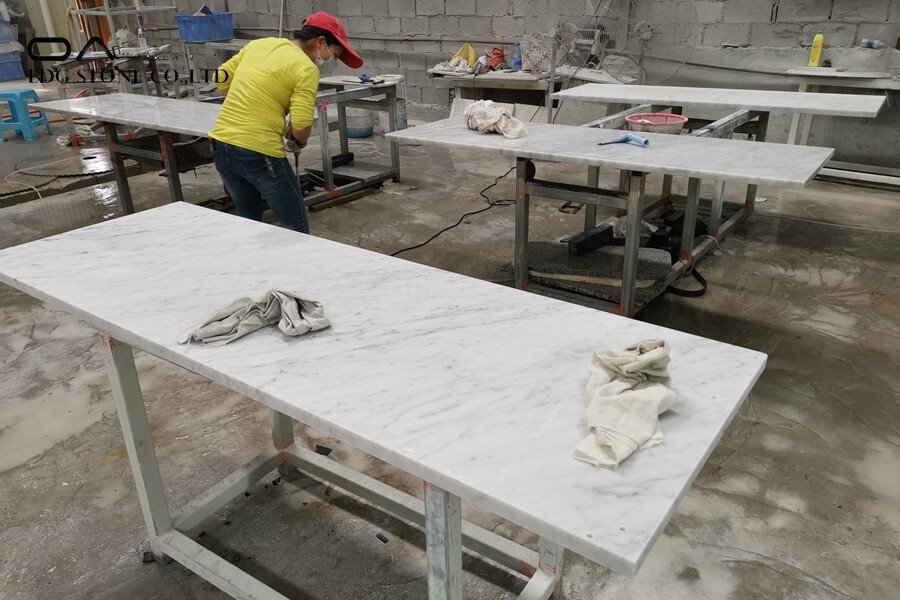Marble originally refers to the white limestone with black patterns produced in Dali, Yunnan Province. The section can form a natural ink landscape painting. In ancient times, marbles with shaped patterns were often used to make screens or mosaic paintings. Later, the name marble countertops gradually It has been developed to call all kinds of limestone that have various colors and patterns and are used as building decoration materials. White marble is generally called white marble, but white marble for statues made in the West is also called marble.
High-grade granite marble in natural stone is the traditional raw material for cabinet countertops, and black flowers and white flowers are more commonly used.
Advantages: The texture of the natural stone is very beautiful, the texture is hard, the anti-scratch performance is very outstanding, and the wear resistance is good; the cost is low, the color is different, and it is the most economical and affordable tabletop material.
Disadvantages: The length of natural stone cannot be too long, and it is impossible to make a full-length overall countertop, which is not suitable for the modern trend of pursuing overall countertops; the two pieces cannot be spliced together, and the gap is easy to breed bacteria; the density of natural stone is large, so it is necessary The strong cabinet support, although it is more than hard, but not elastic enough, cracks will occur in the case of a heavy blow, and it is difficult to repair. Some invisible natural cracks will easily crack when the temperature changes sharply.
Natural stone is mainly divided into two types in daily use: marble and granite.
1) Granite countertops
Advantages: granite has high density, high hardness, and abrasion-resistant surface. It is also one of the materials often used in home decoration. Compared with natural marble, granite has better anti-bacterial regeneration ability among the materials that can be used for kitchen countertops.
Disadvantages: The length of natural stone as a cabinet countertop material is usually not long, so if you want to make a long overall countertop (especially U-shaped and L-shaped countertops), there must be seams, and these seams are also easy to hide dirt.
2) Marble countertop
Advantages: rich colors, soft texture, natural and diverse textures, easy to cut or engrave.
Disadvantages: Because it is naturally formed, the fine loose cracks are easy to break. Because the stone is a porous material structure, if dirt and sewage penetrate during production, transportation, or construction, it is difficult to clean and easy to crack. In daily cleaning, it is inevitable that some residues and dirt will fill in the cracks as the wipes are wiped, and become a breeding ground for bacteria.
If you like natural materials very much, then granite is an ideal choice, but you must pay special attention to the level of the joints of the construction workers to prevent hidden sanitary hazards.









